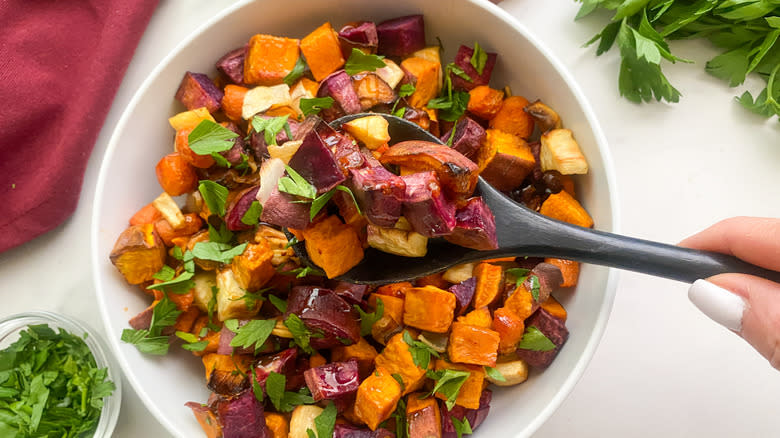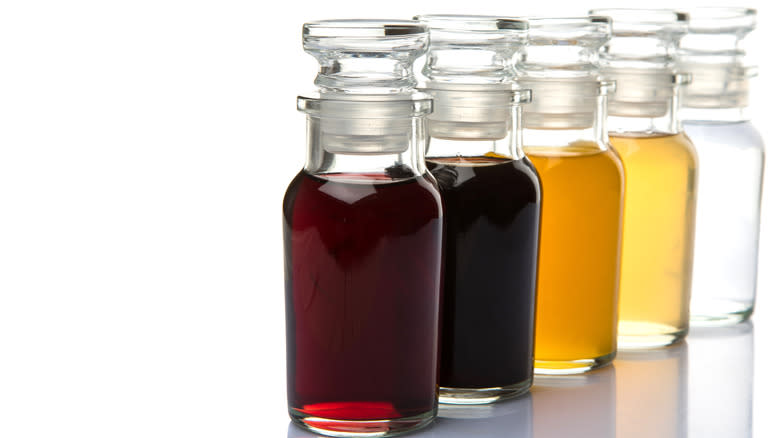Combine White And Apple Cider Vinegar For A Tangy Glaze On Veggies

Vegetables offer a colorful cornucopia of flavors and textures to work with, and whether you're enjoying a raw salad, boiled broccoli, or roasted root vegetables, seasoning is key to enhancing and upgrading any vegetable dish. While a dash of salt and pepper, spice-infused oil, or a squeeze of citrus are all tried-and-true seasoning agents, a tangy glaze is the easy yet elegant addition you need to upgrade your vegetables.
Tasting Table recipe developer Miriam Hahn shows you how easy it is to whip up a simple three-ingredient glaze consisting of white and apple cider vinegar. Hahn uses the glaze in her cider-glazed root vegetable recipe to "take them up a notch from standard roasted vegetables."
While you might associate glazes with dishes like barbecued ribs or honey-glazed ham that achieve their glossy, syrupy consistency as they cook with the meat, Hahn creates her glaze on the stove while her vegetables roast. She blends white and apple cider with sugar in a pot, bringing the mixture to a rolling simmer until it reduces into a thick gel-like sauce. White and apple cider vinegar offer a nice tangy balance to offset the sweetness of the sugar, while the reduction brings out notes of apple and a richer caramelized sweetness.
The thick, gooey glaze will enhance the caramelization of roasted vegetables while also providing a tangy complement to their savory, bitter, sweet, or smoky flavors.
Read more: 21 Delicious Ways To Use Up Leftover Rice
Vegetable Pairings And Alternative Ingredients For A Tangy Glaze

While white vinegar and apple cider vinegar are a delicious duo for Hahn's tangy glaze, you could potentially use any type of vinegar and any type of sweetener, from brown sugar to honey. You can also add spices to the glaze for more depth of flavor.
For example, you could use Hahn's three-ingredient glaze as a jumping-off point, embellishing it with cayenne, cinnamon, and powdered ginger for a spicy kick. Instead of white and apple cider vinegar and sugar, you could make a balsamic glaze with maple syrup or honey for a richer palate with floral and earthy notes. Sherry vinegar, malt vinegar, white wine vinegar, and champagne vinegar would all make delicious reductions with distinct flavor notes. Hahn also recommends adding fresh herbs, nuts, and dried fruits to your glazed veggies for more textural and flavorful complexity.
A tart and sweet glaze will enhance any vegetable's flavor, so you can also swap any of the vegetables used in Hahn's recipe for your personal favorites. While Hahn uses sweet and savory root vegetables like sweet potatoes, carrots, and parsnips, a tangy sweet glaze would work just as well with bitter or nutty roasted vegetables like broccoli, Brussels sprouts, and cauliflower. A balsamic glaze will taste delicious over roasted tomatoes, asparagus, and new potatoes.
Read the original article on Tasting Table.

